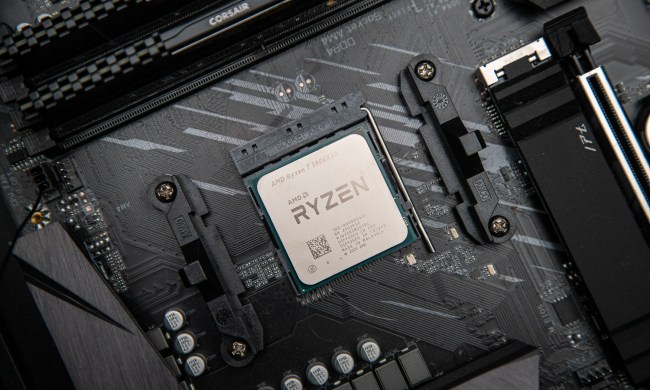Walabot is a handheld 3D-imaging device that plugs into your Android phone and allows you to see through walls, objects, and materials. The parent technology, Vayyar, was originally developed for breast cancer screening, providing something much more portable than a mammogram machine, and making it cheaper, easier, and safer for women to be scanned. But the makers believe there are many more potential applications.
“Looking into skin tissue is difficult,” explained Malcolm Berman, director of marketing at Vayyar, in an interview with Digital Trends. “If you can see through that, then you can see through many other things.”
The 3D imaging is created using radio frequency technology, the same technique we use for Wi-Fi, mobile networks, and radar systems. Vayyar is able to use RF to see through solid objects and Berman claims it emits a fraction of the radiation that our cellphones do. There are antennas in the Walabot firing out signals and sensors to pick up the reflections.
“We can see through objects and see into objects,” says Berman. “This could enable you to check alcohol percent in vodka or fat level in milk, it can also detect speed, track targets, and see where people are moving. You can look inside walls and see the foundation of buildings. You could use it to check how much water is in soil and avoid over-watering crops. It could enhance robotic vision, enabling drones or robots to sense their environment.”
The list goes on, and if you’re thinking it all sounds too good to be true, you’re not alone.
We asked for a demo. The scanner is roughly the same height and width as a smartphone, but it’s much thicker. It attaches to the phone magnetically and you plug in via the Micro USB port. Walabot is only compatible with Android right now and it draws its limited power requirements from the phone. The programmable sensors inside the device have to be configured for different tasks. Our demo involved a typical section of dry wall with some pipes and electrical wiring behind it. Using Walabot, it was possible to scan through the wall and see exactly where the pipes and wires were on the smartphone screen. They showed up as pixelated chunks of bright blue on the black screen, but Berman was quick to point out that developers will be able to create their own graphical user interfaces.
Berman also showed us how Walabot might detect the source of a leak, because it can also pick up on movement. He waggled his fingers behind the wall to emulate spraying water and it popped up on the smartphone screen, with different shades of color indicating depth. In normal circumstances, a plumber might have to cut into the wall or ceiling to find the source of a leak, and everyone can see the benefit of knowing where wires and pipes are before drilling. As a DIY aid, Walabot can clearly do a job.
Vayyar has been working with Fortune 500 companies to license the technology and build it into different devices, but Walabot is its first attempt to sell directly to consumers. Part of the reason for this is that it wants to engage the maker movement and drive the technology forward to unleash new applications.
The team at Vayyar has been producing demo videos, which shows things like the Walabot finding a coin buried in a bowl of sand, or being employed by a robot to avoid obstacles. The technology is impressive. We can see how it might help a blind person navigate, but it still needs a lot of work to achieve some of the more sophisticated tasks Berman was talking about, like scanning the alcohol content in a drink, or alerting you about an elderly relative having a fall.
If you’re intrigued and you want to try it for yourself, then you don’t have long to wait. The Walabot and the API are available from April at the Walabot website. You can snag a basic starter kit for $100, a maker kit for $250, or the finished Walabot Pro for $600. Those are pre-order prices which knock $50 off the normal price of a starter kit and maker kit. The starter kit is limited to a three-antenna array, so it’s only capable of things like range measurement or breathing monitoring. The maker kit has a 15-antenna array, so it can track people and measure distance and depth. The Walabot Pro is what you need if you want to see through walls or track people with fall detection.
The Walabot will ship with some example apps, but the hope is that a dedicated maker community will spring up and develop all kinds of new apps that really unlock that potential. It’s going to be interesting to see what different developers do with the technology. We’ll be keeping an eye on this one.


